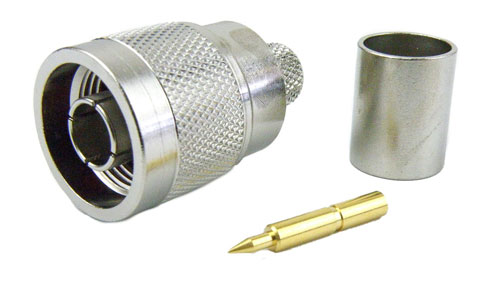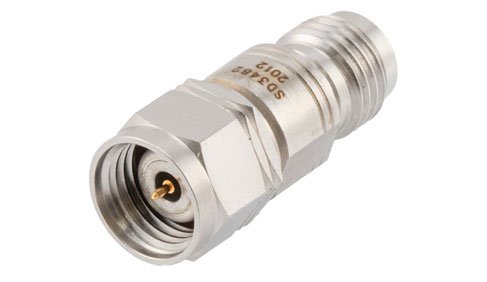N-Type Coaxial Connectors in A Nutshell

N-type Coaxial Connectors are one of the most common coaxial connector types used in wireless communication and sensing systems. This connector type has been around since the 1940s and was originally designed for military applications not exceeding 1 GHz maximum operating frequency. These coaxial connectors can be found in virtually all applications that operate below 6 GHz, though there are such connector variations that go as high as 11 GHz or even 18 GHz. N-type coaxial connectors are typically threaded connector types, though there are several variations, as there are with another common coaxial connector type, the SMA connector. N connectors were originally defined in MIL-STD-348 and come in both 50 Ohm and 75 Ohm versions. This is sometimes an issue as many manufactured versions of these connectors are not labeled as either 50 Ohm or 75 Ohm, and may be confused in broadcast, military, automotive, and other applications that may use both 50 Ohm and 75 Ohm N-type connectors, which are not typically compatible.
Like other coaxial connectors, there are female and a male N-type coaxial connectors, though there are hermaphroditic connector variations also available. These are less common than the typical threaded type, as hermaphroditic connectors tend to be expensive and are generally only used for test and measurement applications.
N-type coaxial connectors typically can handle more power than SMA coaxial connectors, as these connectors are larger and allow for wider spaces between the conductors. However, the extent of N-type connector power handling depends on the dielectric breakdown, connector design, connector material, and frequency of operation. Like other coaxial connectors, the power handling is a function of frequency and decreases at higher frequencies.
The 50 Ohm N-type connector is one of the most common connectors for test and measurement equipment and metrology applications for frequencies within range of precision variations of this connector (~11 GHz). Hence, there are many devices and components that operate to 6 GHz, and even X-band, that use these connectors as an interconnect interface. There are N-type connectors with attachments for bulkheads, coaxial cables, surface mount soldering (reflow), thru hole soldering, end launch, and even reusable end launch N-type connectors. There are also highly specialized versions of these connectors, such as high voltage (HV), reverse-polarity, left-hand thread, and others. Given the popularity of N-type connectors, there are a wide array of variations and customized adaptations well beyond the scope of this article.




